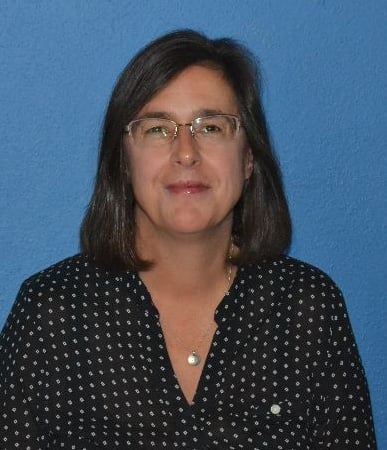
Reinforcing the critical role radiologists can, have and should play to remain relevant in the policy arena was the key takeaway from one particular Radiological Society of North America’s (RSNA) 2021 annual meeting in December. At “Health Policy Agenda: Are Rads at the Table?” presenters shared case studies and outcomes that emerged on a range of issues vital to radiologists and their patients — from pediatric radiology to state laws and federal research.
Credit is due to the RSNA planners who recognized the importance of such first-hand experiences. As was noted, radiology does not exist in a vacuum. Lawmakers and regulators, as well as commercial insurance companies influence how medical imaging services are accessed and reimbursed. This case-based lecture session explored the importance of radiologist-led advocacy, with valuable examples of the importance of physician engagement on policy, and recommendations on how physicians can and should become involved.
Here, a summary from radiologists who’ve seen the value of earning, and leveraging, a seat at the table — where radiology policies, practices and research is developed.
Case Study 1
How Finding Allies and Building Momentum Proved Critical to Pediatric Radiology Coverage Plans
When a presentation starts with a 10-year-old standing next to a popular rock star, the audience leans in. Such was the case when a pediatric radiologist, and committed advocate for the policies that impact young patients, summarized a significant case study. The focus: working to ensure that children’s radiologic treatment is insured. Specifically, for children to not be viewed as adults in the eyes of insurance companies.
Richard Heller, III, MD, MBA, pediatric radiologist, is no stranger to advocacy and its vital role in moving the needle toward more humane, less financially motivated insurance policies. His work, and that of collaborative colleague advocates across the healthcare spectrum, has yielded coverage changes that were a direct result of a years-long effort to impact change.
A pediatric radiologist with Radiology Partners, Heller is Associate Chief Medical Officer; Communications & Health Policy; and National Director of Pediatric Radiology at Health Policy Communications with RP, which serves the University of Chicago Medical Center’s Comer Children’s Hospital. He serves as RP’s National Subspecialty Lead for pediatric radiology. Additionally, Heller is an officer of the Society for Pediatric Radiology, an editorial board member of the Pediatric Radiology Journal and a leader of economic-focused committees for the American College of Radiology.
He noted that patient steerage is determined by large insurers, in this case, Anthem. The issue was economically motivated patient steerage, where policies sent children to one versus another site for no reason other than financial. He referenced evidence from the American College of Obstetricians and Gynecologists (ACOG), and noted the cost differential between magnetic resonance imaging (MRIs) in hospital outpatient departments and free-standing imaging centers, where It’s typically less costly to go to an imaging center, which he contends was what was motivating their policy.
As a result of this steerage policy, Anthem’s policy was that any child over the age of 10 could not be treated at a pediatric hospital. The photos of his son, one before he turned 10 and one just after, when he posed with a favorite musician, served as a stark reminder of the arbitrary nature of the insurance company’s policy. It brought a human connection to how these age limits could impact a young patient and the family.
From a pediatric radiology perspective, Heller and his affiliates felt this was the time to protect and advocate for children and families. After summarizing years of advocacy initiatives he and his cohorts worked on, he shared actionable insights on how others in radiology can follow fundamental, and ultimately successful, efforts to deliver coverage that best served the patient.
Key Steps Needed
Heller reinforced the importance of making the message easy to understand. The policy as it was broke the first rule of pediatrics, which is that children are not adults. They needed to convey to Anthem why it was so important, explaining the value of the work done and outcomes delivered by pediatric radiologists. They focused on noting that these radiologists are specially trained to look for peds pathologies. Also, pediatric staff and technology in children’s hospitals was another important area. Sedation done by those who do it all the time is a value-add that pediatric facilities have, along with protocols such as lower radiation, limiting disruption to families, etc. (using the example of a child who had a seizure). Further, different locations might break the medical record, aside from logistical barriers, and that the radiology reports may be read or re-read elsewhere. The message: The 10-year-old cut off is arbitrary.
The discussions they had were focused on key patient considerations: First, that children can require specialized pediatric equipment; second, that children are more radiosensitive than adults; and third, that average doses are lower in pediatric facilities compared to general care facilities.
Even with a concerted effort to create awareness in 2018, Anthem maintained its policy in 2019. In 2019, United did the same thing. Cigna did the same. Not only had their advocacy not worked to get Anthem to roll back the policy, but it was gaining momentum. So, a larger effort was begun.
Knowing they needed to build a wider coalition of advocates, they reached out to other related organizations. An important emphasis was placed on the collaborative support and leadership across the healthcare spectrum which played an enormous role in amending the misguided policy, according to Heller. Notably, the American College of Radiology (ACR) took a principled stand, which led to others supporting the effort. The American Academy of Pediatrics (AAP), American Hospital Association (AHA), American Medical Association (AMA) and the American College of Emergency Physicians (ACEP) all took a stand and made their voices, and opinions, heard, joining in the advocacy effort to get the policy on the side of children and patients. The combined outreach program included letters, media relations, calls to the insurance company executives, all toward a team approach to enact change.
“We knew we were doing the right thing, so we stayed persistent,” Heller commented. Cigna rescinded the policy and excluded pediatrics. In early 2021, United pulled back their policy but Anthem dug in. ACR and the Society for Pediatric Radiologists (SPR) continued advocating for children and families with renewed vigor through a letter-writing program that finally resulted in a positive outcome.
Seeing Results
After years of advocacy, Anthem, in August 2021, did confirm a policy revision, changing their policy for children up through 18 years of age, citing evidence the advocacy program had offered. shared them. Up to this point, Aetna (another of the top 5) had been silent. Yet, in the fall, they excluded pediatrics after watching everyone roll back their policies. Having “won other rounds,” he noted that this was a battle they had won as a result of fighting the other battles successfully.
Like so many advocates have experienced, Heller and others on this cause said that If they did not have their allies with them, it would not have succeeded. Once Cigna and United rolled back their policies, there was a lot of momentum for Anthem to act.
“Finding allies was key to advocacy, and this was a great example of persistence paying off,” concluded Heller. He acknowledged, “We suffered a lot of losses along the way.”
“The bottom line is that momentum matters, and the biggest takeaway is that if you are passionate about an issue, be the squeaky wheel and speak up,” urged Heller.
Case Study 2
At the Table in Texas: State-level Advocacy for Breast Imaging
With a focus on the impact of statewide advocacy in shaping breast imaging laws, Sarah S. Avery, MD, FACR, Austin Radiological Association, reinforced the value of physician engagement during her RSNA session. Avery is a diagnostic radiology specialist with ARA Diagnostic Imaging in Austin, Texas. A women’s health breast imaging advocate, she is currently serving as President-elect for the Texas Radiological Association (TRA). Additionally, she holds a faculty position at UT Med School.
With an update on the status of breast imaging legislation in Texas, Avery shared how advocates across the state have been effective in their efforts to positively affect health policy through state legislation. She provided useful tips to radiologists in attendance as to how radiologists can be successful with advocacy initiatives, reinforcing the role of collaboration and communication.
Committed to the Cause
The first of several radiology-related laws was Senate Bill SB 1065, signed into law on June 16, 2021, which changed the Texas insurance code. Sponsored by Sen. Carol Alvarado of Houston, this legislation said that coverage for diagnostic imaging must be provided, stating: “A health benefit plan that provides coverage for a screening mammogram must provide coverage for diagnostic imaging that is no less favorable.”
“This was cause for celebration, as Texas tends to be pro-business anti-regulatory,” noted Avery. She added, “This was great because it now allows diagnostic imaging and supplemental breast screening for modalities including ultrasound and MRI.”
Among the many advocates committed to the cause, one breast cancer survivor from Dallas was instrumental in getting initial legislation passed. She had been going through routine mammography, but density obscured the view. Ultimately, she was able to get a bill written and sponsored. The language in that bill, influenced by Texas radiologists, specified women needed to be alerted that breast density is a risk factor and be informed that supplemental screening is in fact an option. There had been no such prior stipulation for coverage.
Another law, passed in 2019, also specified a change to the Texas insurance policies. This language was also influenced by a Texas radiologist, becoming the Breast Density Notification Law (HB 2102-2011), also known as “Henda’s Law.” This was grassroots advocacy by a breast cancer survivor, and sponsored by Rep. Ana Hernandez Luna. Additionally, HB 170-2019, authored by Texas State Senator Diego Bernal, stated “A health plan benefit must provide coverage for a diagnostic mammogram no less favorable than for a screening mammogram.”
Have a Seat at the Table
The advocacy initiatives Avery detailed proved critical to reaching impactful outcomes for women and breast imaging policies and procedures. Avery encouraged those in attendance to learn, as she did, about just how important it is to have a seat at the table.
“Working with a team has been instrumental in achieving positive outcomes,” said Avery. She identified several specific steps which, over the years, support effective advocacy programs.
The Texas Radiological Society did start a Political Action Committee (PAC), and employed a full-time lobbyist. That role is to respond to bills proposed by other entities, and stay current on the constant changes in the legislature. Avery expressed the important role donations played in this capacity. Financial support was fundamental, with generous donations by independent radiologists as well as larger radiology groups to keep advocacy action strong. She also reinforced the value of advocacy groups of radiologists going to the Capitol to meet with legislators to help elected officials become aware of their interests and issues. She added that passion about advocacy helps teach others, as leaders and mentors, and is a key component to successful advocacy. The value comes from sharing what has been successful in the past, and in sharing important institutional knowledge.
Avery identified another valuable aspect of advocacy, which is regularly partnering with other stakeholders who hold similar interests. One example is the Texas Medical Association (TMA), representing 55,000 members. Their programs on advocacy, training, and other initiatives help radiologists work with bill sponsors and get mentorship. TMA sponsors an inter-specialty committee, as well. This collaboration allows radiologists to get directly involved in legislation and the industry overall. More often than not various societies have common interests and this is a great way to amplify the collective voice. She’d also learned how legislators pay more attention where groups agree and work together as a team.
Having successfully worked alongside fellow Texas radiologists, grassroots advocates and elected officials, Avery encouraged radiologists to realize the positive outcomes that emerge to create better policies and better health care for patients overall.
More information on RSNA21 can be found here.

Christine Book is a Contributing Editor for Imaging Technology News, and has developed a variety of content for both ITN and Diagnostic and Interventional Cardiology (DAIC). Throughout her career, she has covered radiology, cardiology and other healthcare specialties, as well as emerging trends in artificial intelligence, sustainability and Software as a Service (SaaS) technology. In addition to her editorial experience, Book’s work has included generating national media coverage for organizations and brands, and managing marketing for multiple B2B publications.


 December 17, 2025
December 17, 2025 









